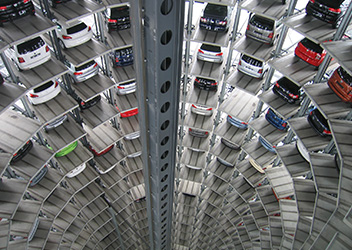The Auto Industry and the Public Good
Krishan Dhawan, May 9, 2017
Let me start with two quotes from Peter Drucker:
“It is management’s public responsibility to make whatever is genuinely in the public good become the enterprise’s own self-interest.”
“The proper social responsibility of business is to tame the dragon – that is, to turn a social problem into economic opportunity and economic benefit, into productive capacity, into human competence, into well-paid jobs, and into wealth.”
These quotes provide a relevant backdrop in examining how certain sections of the automobile industry operated leading up to the introduction of BS IV standards on April 1, 2017.
The Supreme Court said it well, health before profit. Not everybody in the auto industry operated on that basis. BS-IV fuel for 13 metro cities was introduced as far back as April 2010. Two years ago, notice was given on the need to move to the cleaner and lower emission engine and fuel standards prescribed by BS IV on a nationwide basis. It is notable how different sections of the auto industry responded to the deadline.
Certain companies took advantage of the lead time to convert their production lines and products to the new cleaner standards. This included industry leader, Maruti Suzuki, as well as Toyota and Mercedes among others. They phased out production on the older standard and were ready well ahead of time on the production, service and sales fronts.
There were other manufacturers however who not only failed to switch in advance but actually increased their production of the higher polluting models in the run up to the April 1, 2017 deadline. Rather than getting ready with their new products, these manufacturers, through their industry association, were pushing for the April 1 deadline to be on production and not sales. Despite the uncertainty, they still ramped up production and built up inventory, and highlighted the potential financial loss if they were not allowed to sell what they had produced.
Not only were they impacting public health by producing vehicles with out-of-date emissions norms, they were risking their own financial health by producing vehicles that could potentially remain unsold.
As it turned out, the Supreme Court banned sales of BS III vehicles after April 1. The manufacturers found themselves with Rs. 5,633 crores of unsold BS III trucks, cars and 2-wheelers. The biggest share by value was in commercial vehicles, estimated at 43,826 vehicles valued at Rs. 5,076 crores. It is difficult to be sympathetic with the manufacturers to a situation which they brought upon themselves. As of March 20, the truck inventory was reported to be 96,700, which means that nearly 52,000 trucks were sold in the last 11 days of March through deeply discounted prices. Given that most vehicles in India run for at least 15 years, the emissions from these trucks will be with us for a long time. The manufacturers will be exporting the balance unsold vehicles and their associated emissions to lesser developed countries that still allow such technology.
April 2017 sales numbers show that car and 2-wheeler sales were up 17% and 7 % from April 2016, reflecting availability of adequate BS IV compliant stocks with manufacturers. Truck sales however fell by 22%, most likely because of inadequate BS IV compliant inventory.
Rather than leading from the front and paving the way with modern technologies that are used widely elsewhere in the world, the industry association fell back on excuses of manufacturing job losses, the impact of increased vehicle prices on consumers and the unavailability of the right fuel. As mentioned before, these excuses had not come in the way of the more right minded members of the industry.
Thanks in part to their obstructionist approach and delaying tactics, the industry is now being asked to move directly to BS VI standards by 2020, leapfrogging the intervening BS V. Perhaps a more progressive and responsible approach and early industry adoption to BS IV would have ensured a more measured and gradual glide path to technology upgradation.
Even in the current situation, the progressive early movers have given themselves more time to get ready for this significant change in technology to BS VI. The recalcitrant ones have left themselves less time to make the change and it will be no surprise if they repeat their obstructionist behavior as the next deadline draws near.
There is a very significant reduction in emissions when moving from BS III to BS IV, especially in diesel. PM drops from 0.10 g/kWh to 0.02 g/kWh, a drop of 80%. Fortunately with diesel price decontrol, the percentage of diesel passenger cars has dropped markedly over the recent past. However, commercial vehicles, with their large capacity diesel engines, overloading, poor maintenance and tyre quality remain very significant contributors to overall vehicular pollution.
Such patterns of behavior appear particular to the automobile industry across the world. We have been made aware of tampering scams on diesel engines’ emissions by VW and other European manufacturers. GM in India was found to have manipulated road test results a few years ago. The US automobile industry is now appealing to the new US administration to roll back fuel efficiency commitments that had been obtained from the industry when they were looking for financial bail outs some years ago.
